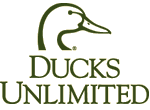 When I was an psychology intern I once asked a supervisor why he liked working with alcoholics, (which since I was determined to be a child therapist never appealed to me). His answer stuck in my head and stayed with me all these years. He answered frankly, “I was in therapy for seven years. In all that time I changed this much” (he demonstrated an tiny gap between his thumb and forefinger).
When I was an psychology intern I once asked a supervisor why he liked working with alcoholics, (which since I was determined to be a child therapist never appealed to me). His answer stuck in my head and stayed with me all these years. He answered frankly, “I was in therapy for seven years. In all that time I changed this much” (he demonstrated an tiny gap between his thumb and forefinger).
“When I work with an alcoholic they can turn their entire life around
Which springs to mind when I consider writing about this very minute victory that dogged persistence achieved. It didn’t take seven years, but gosh it feels like it.
 I think it was in ancient days of yore when I was asked to co-author the chapter on urban beavers for the beaver restoration guidebook. I remember being so excited and proud I couldn’t sleep before our first conference call, and working literally hours on every single paragraph. As excited as I was to work on a chapter about coexisting with beavers in an urban setting. that’s how disappointed I was to see the final edited version with a horrific sentence that had been ‘edited in’ by unknown fingers.
I think it was in ancient days of yore when I was asked to co-author the chapter on urban beavers for the beaver restoration guidebook. I remember being so excited and proud I couldn’t sleep before our first conference call, and working literally hours on every single paragraph. As excited as I was to work on a chapter about coexisting with beavers in an urban setting. that’s how disappointed I was to see the final edited version with a horrific sentence that had been ‘edited in’ by unknown fingers.
Basically that sentence erased everything I had worked towards and suggested those beavers might have been happier if I had just allowed them to be relocated instead. I don’t want to be too dramatic but to me it was kind of like the opposite of a “It’s a wonderful life” it where Clarence the angel scratched his head and said, gosh “everything really would have been better if you had never been born“.
Rogue sentences are hard to trace and harder to erase. There were a host of editors and readers of the document, and no one said they knew how the mysterious sentence got in there. I was warned before hand that every comment had to be backed up with science and not to site “Gray literature”. Even so, there did not appear to be a reference for explaining why beavers would have been happier without Martinez.
(I can’t even imagine how you would research something like that? How do tell when a beaver is happy anyway?)

Anyway I kept poking, prodding and nudging to get this changed, I wheedled and implored and I’m sure it was Kent Woodruff who took mercy on me and finally got it edited. (Thank you, Kent!) Yesterday Greg Lewallen sent these changes to ask if I was happy with them.
In communities where concerns over coexistence have not been properly addressed and management steps have not been taken to ensure the success of urban beaver colonization, then allowing beaver colonization within these communities may not be the appropriate response. In those instances, relocating beaver to wilder places (see Chapter 5: Relocating Beaver) might be the preferred alternative for both beaver and people, as demonstrated by Wildlife 2000 in Colorado.
Ahhh. So there were magic things we did in Martinez that let those crazy urban beavers succeed where they might otherwise have failed? I guess. We installed a flow device and made people stop trying to kill them, that was really helpful. We wrapped trees and held a beaver festival. It was never rocket science. Any city could do it.
But assuming it survives some more ghost edits, it feels a little better anyway.














































